How to Boost Flexibility and Mobility in Elderly Africans and Why it Matters
By Victory Onyenekwe. B.Sc. Ed Physical and Health Education. Freelance Health Writer. Medically reviewed by Isma Butt, DPT.
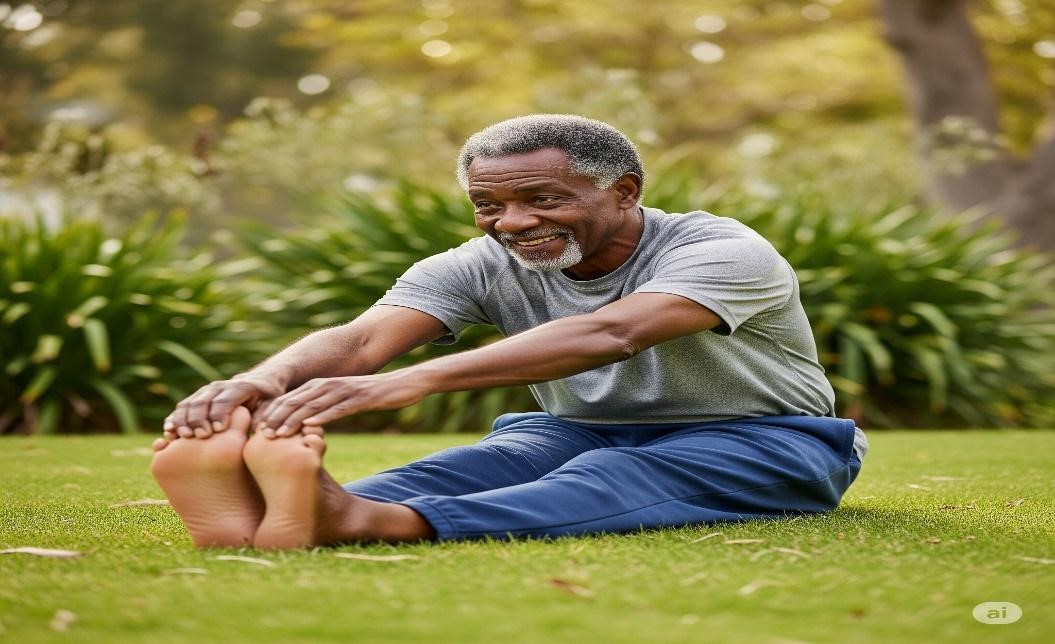
An elderly African man in a grey shirt and blue trousers sitting on the ground while reaching for his toes. Image generated by Gemini AI
Ever tried getting up from bed and it felt like your bones were protesting? Or tried to pick an item from the ground lately without grunting? Does it feel like as you get older, your joints feel stiffer and your muscles are always sore? Well, there is a simple way to fix that. How, you may ask? Through added flexibility and mobility.
Flexibility is the ability to move joints, muscles, and tissues through a normal range of motion, while mobility refers to the ability to move or use the muscles and joints in carrying out normal activities without strain or injury.
Oftentimes, flexibility and mobility are overlooked, especially among older Africans, but they are quite vital for daily life and the ageing process. In this article, you will learn the importance of flexibility and mobility for the elderly, along with practical and accessible tips to improve flexibility and mobility.
Flexibility Vs Mobility: What’s the difference?
Quite a number of people assume flexibility and mobility are one and the same but, they actually refer to different aspects of physical fitness.
Flexibility is the ability to move joints, muscles, and tissues through a normal range of motion. Having a flexible body allows for pain-free movement, which is important for your day-to-day living.
Mobility refers to active movement. It is the ability to control the body’s movement and position comfortably through its full, active range of motion. Good mobility is essential for everyday tasks from sitting on a chair, bending to pick up a load or an item, gardening, climbing stairs, cooking, doing laundry, etc.
Flexibility and mobility are not only necessary for sportsmen and women; they are an important part of everyone’s daily lives, extending to the ageing process. Let's see why they are important for Africans:
A black middle aged man doing stretching exercises outdoors with the 10 benefits of flexibility and mobility listed in the foreground. Image credit: Freepik. Click on image to enlarge.
1. Improves Range of Motion: Whether it is carrying a heavy load, gardening, farming, or house chores, flexibility and mobility offers you a free range of motion or movement available at your joints while carrying out daily activities without feeling stiff or experiencing pain or soreness in your joints.
2. Fall Prevention: Poor range of motion, stiff muscles, and poor blood flow can result in injuries and falls among the elderly. Flexibility improves the range of motion of the muscles and joints, increases blood flow to the joints and muscles, and reduces muscle stiffness, thereby reducing the risk of injuries and falls when engaging in daily activities.
3. Pain Reduction: Flexibility activities such as stretching loosen tight muscles and tendons. This increases blood flow, oxygen, and nutrient delivery to muscles and joints, which aids in reducing inflammation and promotes healing. It also alleviates common back, neck, and shoulder stiffness resulting from prolonged sitting or standing.
4. Improves Posture: Constantly slouching or struggling with bad posture? Flexibility activities counteract slouching and improves your posture.
5. Assists Graceful Ageing and Independence: As you get older, the risk for falls gets higher. Flexibility aids you in maintaining ease of movement as you get older, enabling you to remain active and stay independent in activities of daily living like using the toilet, taking a bath, doing laundry, cooking your meals, getting out of bed, and sitting on a chair.
6. Enhances Functional Movements: Whether it is navigating uneven terrain, carrying heavy loads, getting up from a low stool, or climbing the stairs, mobility helps us perform these daily activities comfortably with less strain.
7. Prevents Injury and Promotes Work Performance: Increased mobility in workers means that they are able to work more efficiently with less fatigue, greater power, and safety, while maintaining precise movements.
8. Improves Circulation: Stretching increases blood flow to muscles and tissues, reduces inflammation and improves cardiovascular health.
9. Improves Bone Health: Exercises facilitated by mobility strengthen the bones, drastically reducing the risk of fractures and bone diseases like osteoporosis, which is common among older African women.
10. Promotes Mental Well-Being: Mobility allows the elderly to participate in social activities, which can combat loneliness and isolation.
How to Improve Flexibility and Mobility (Practical Tips for Africans)
Improving flexibility and mobility does not have to be difficult or be dependent on the existence of a gym or expensive gym equipment. Your own body, everyday items, and your surroundings are often all you need.
Here are some exercises you can do to improve your flexibility and mobility:
Stretching is a physical exercise that requires putting your body part in a certain position that will serve in lengthening and elongation of your muscle or muscle group and thus enhance its flexibility and elasticity. Stretching improves flexibility while delaying impaired mobility associated with ageing.
There are different types of stretches that you can engage in to improve flexibility and mobility; we’ll place our focus on two of these types of stretches.
Common areas that static stretches can target include:
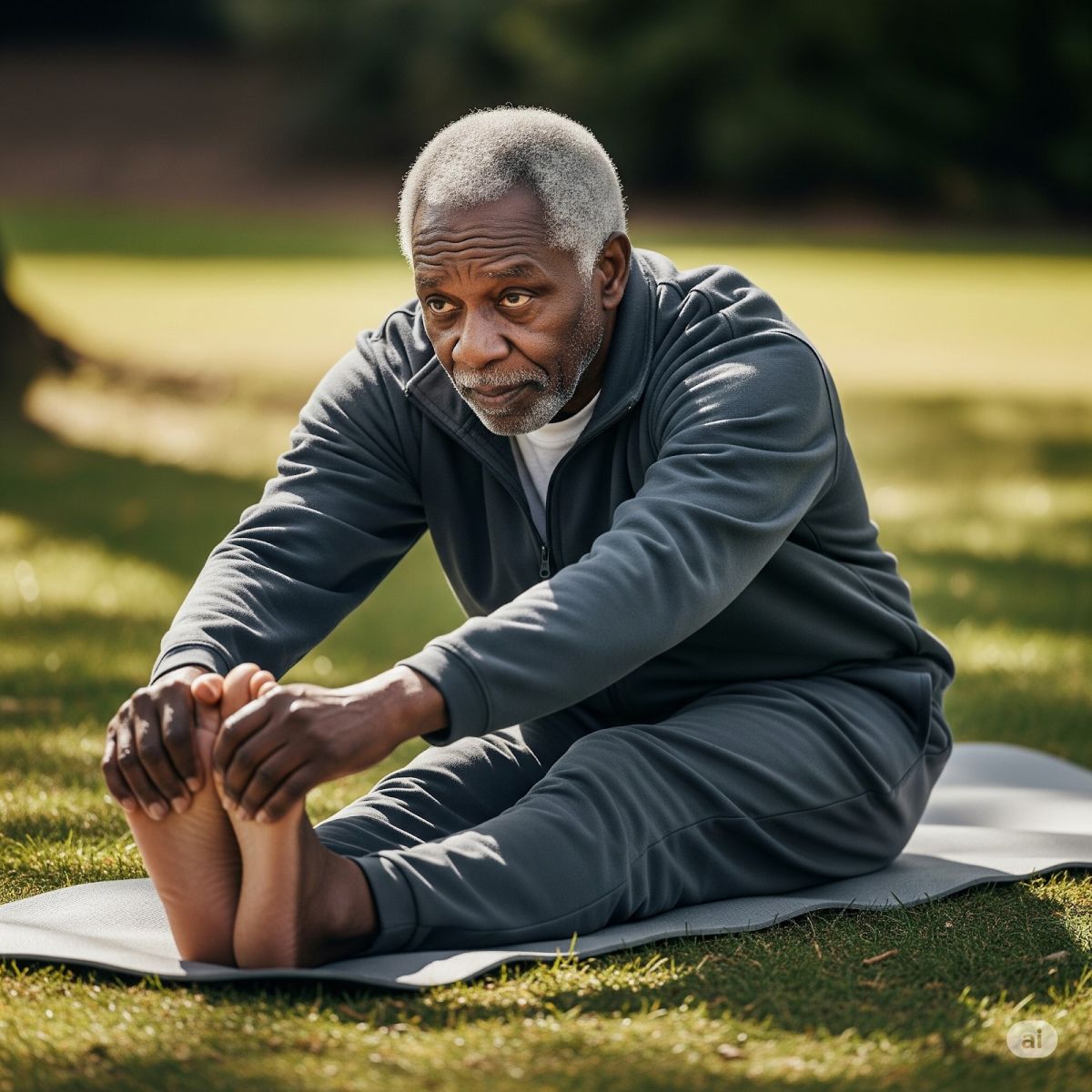
An elderly African man dressed in a grey sweat suit doing a hamstring stretch. Image generated from Gemini AI
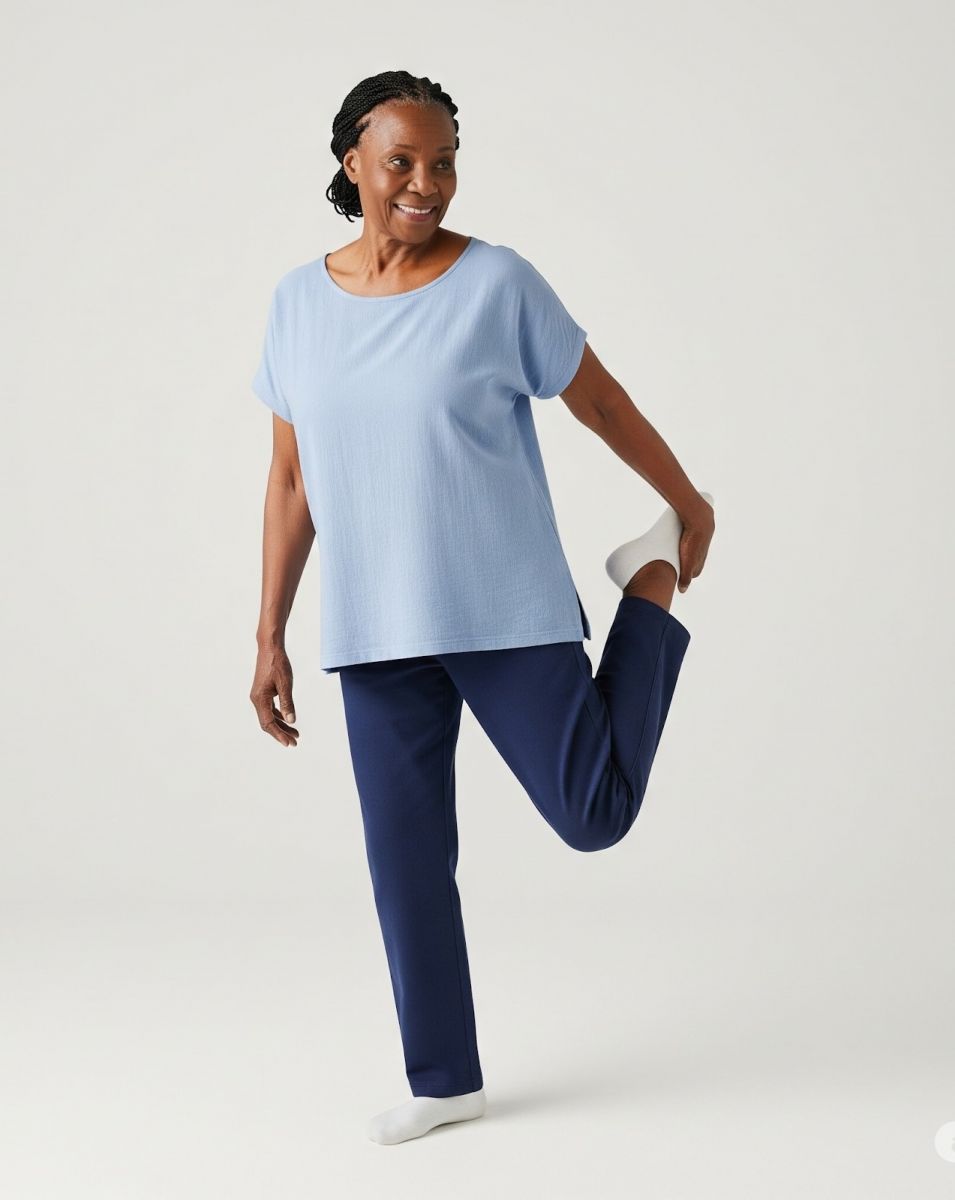
An older African woman dressed in a light blue shirt and dark blue pants, doing a quadriceps stretch. Image generated from Gemini AI
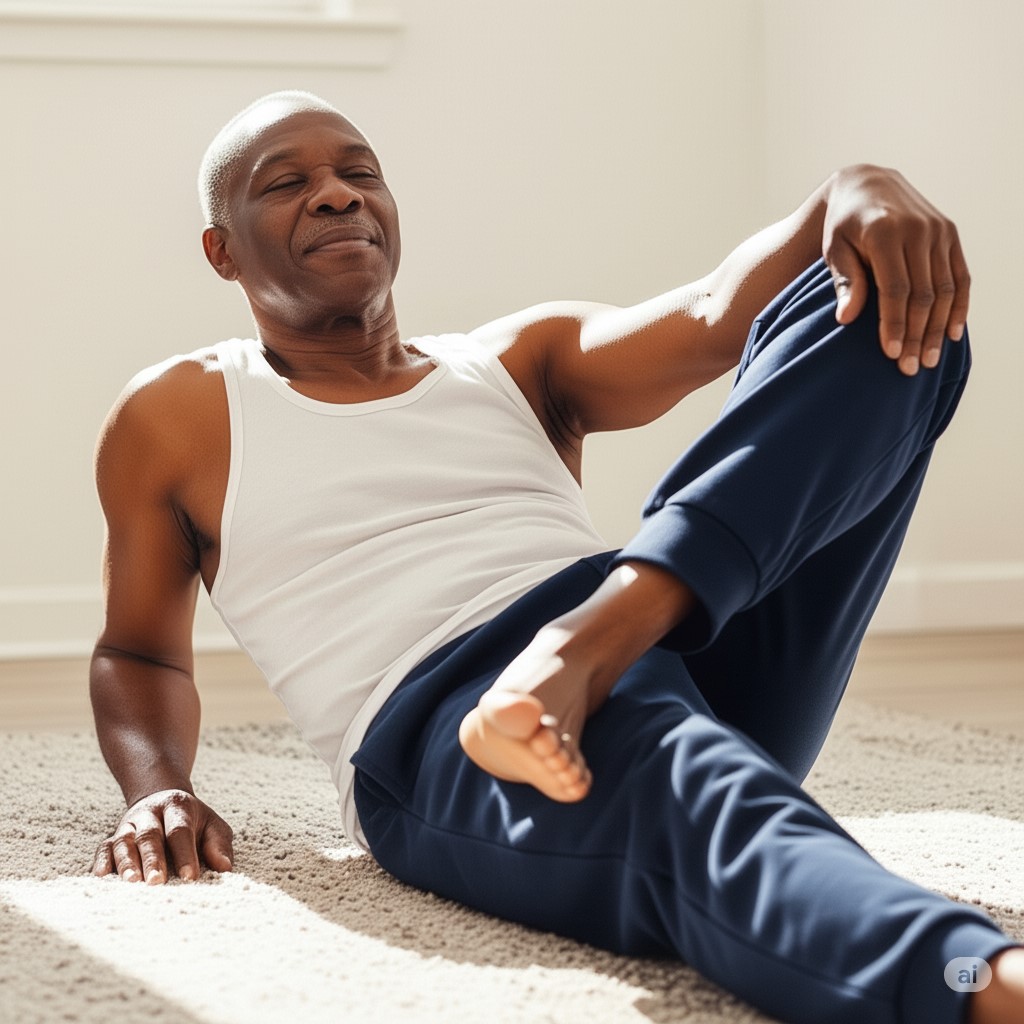
A middle aged African man wearing white tank top and blue sweatpants laying on the floor with one ankle crossed over the opposite knee. Image generated from Gemini AI
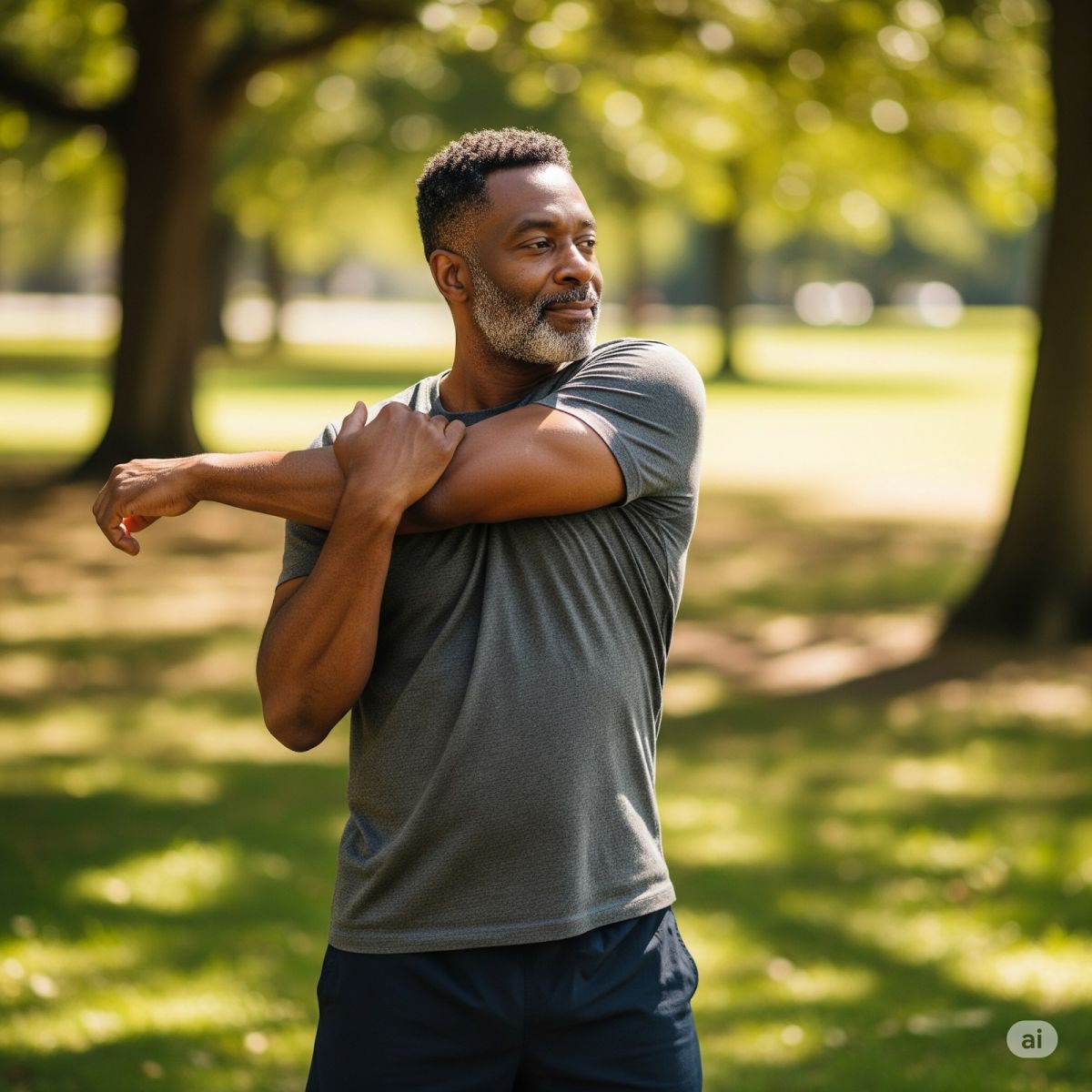
A middle aged man wearing a grey shirt doing a shoulder stretch. Image generated from Gemini AI
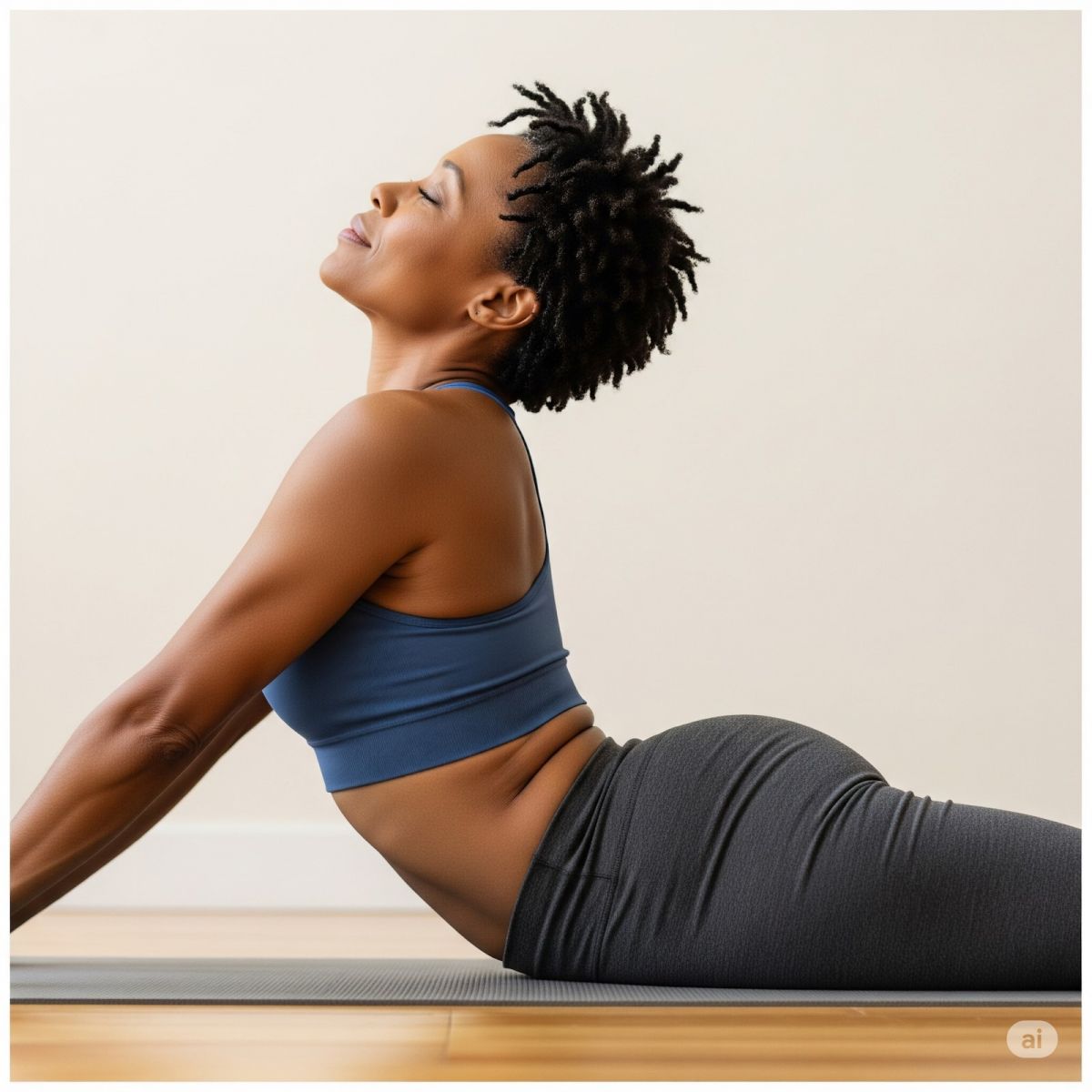
A middle aged African woman wearing a blue tank top and grey sweatpants doing a back stretch. Image generated from Gemini AI
Stretches can be integrated during short breaks from work, physically demanding chores, in the morning, and before bed.
Take regular short walks around your house, while running errands, and around your community. Other forms of movement practices that can improve mobility and flexibility include dance, which develops mobility, coordination, and overall fitness. Daily chores are also a great way of incorporating mindful movement and can be an opportunity for using the body efficiently through a good range of motion.
.jpg)
Partial view of a black lady wearing a whire vest performing strength training exercise with a dumbbell
Engaging in chair squats, light dumbbells for bicep curls, chest presses, carrying groceries, and gardening are great ways to build strength and contribute to functional fitness. Strength training is crucial for maintaining bone density and muscle mass. [1]
It is important to start these exercises from the simple to complex ones. Stay hydrated, and eat wholesome foods for muscle health and recovery. Ensure you take adequate rest to allow the body to recover and stay consistent. It’s more important to be consistent in sessions than intense in infrequent sessions.
Safety Tips to Observe
While incorporating flexibility and mobility activities into the lives of older Africans is of great importance, there are certain precautionary measures that must be taken to avoid injury. These include:
Ultimately, the journey of ageing doesn't have to be filled with injuries, falls, or a loss of independence. By simply adding flexibility and mobility activities into the daily routines of older African adults, you can help them age gracefully and continue to live active, independent lives within their families and communities.
1. Mayer F, Scharhag -Rosenberger F, Carlsohn A, Cassel M, Muller S, Schar-hag J. The intensity and effects of strength training in the elderly. Dtsch Arztebl Int. 2011 May; 108 [21]: 359-64. Doi: 10.3238/arztebl.2011.0359. Available from here
Related:
Fall Prevention in Elderly Africans
7 Tips for Sustainable Exercise for Beginners in Africa
7 Practical Tips to Help African Stroke Survivors Regain Independence
Recommended Assistive Products for the Elderly and Stroke Survivors in Low Resource Countries
How to Deal with Joint Pains – Tips for Africans
Post-Stroke Rehabilitation Explained
Best Exercise for Healthy Ageing in Africans [Tips]
Published: July 19, 2025
© 2025. Datelinehealth Africa Inc. All rights reserved.
Permission is given to copy, use and share content for non-commercial purpose without alteration or modification and subject to source attribution.
DATELINEHEALTH AFRICA INC., is a digital publisher for informational and educational purposes and does not offer personal medical care and advice. If you have a medical problem needing routine or emergency attention, call your doctor or local emergency services immediately, or visit the nearest emergency room or the nearest hospital. You should consult your professional healthcare provider before starting any nutrition, diet, exercise, fitness, medical or wellness program mentioned or referenced in the DatelinehealthAfrica website. Click here for more disclaimer notice.